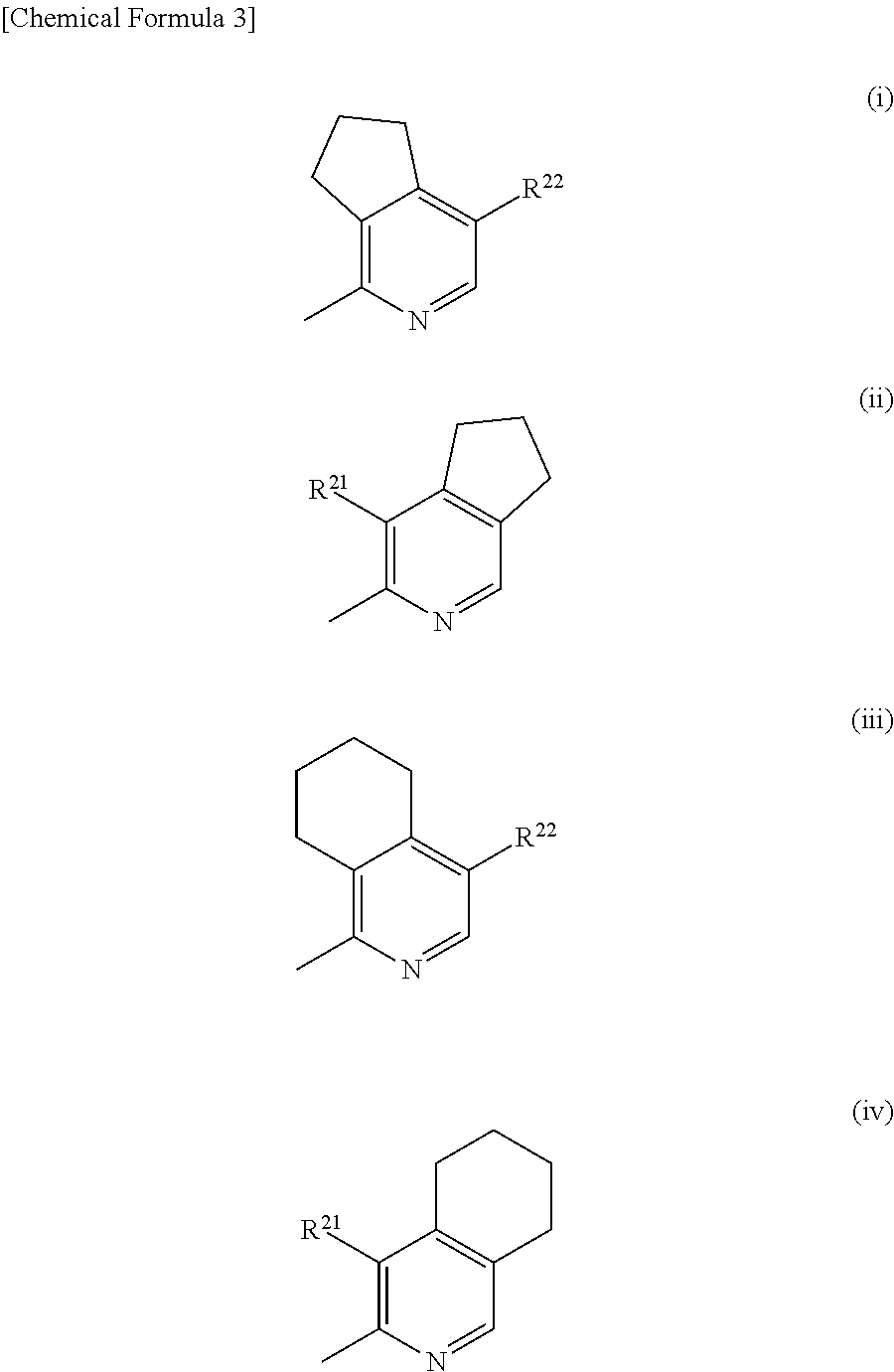Pyridine derivatives
a technology of pyridine and derivatives, applied in the field of pyridine derivatives, can solve the problems of increasing affecting the quality of life, and increasing the risk of hyponatremia, so as to reduce the risk of fracture, increase the endogenous avp level, and reduce the avp level
- Summary
- Abstract
- Description
- Claims
- Application Information
AI Technical Summary
Benefits of technology
Problems solved by technology
Method used
Image
Examples
example 1
[0181]To a mixture of (3R,4R)-3-{[4-(3-cyclopropylpropyl)-5-methylpyridin-2-yl]methyl}-3-(methoxymethoxy)-1-(methoxymethyl)-4-[(methylsulfanyl)methyl]azetidin-2-one (100 mg) and CH2Cl2 (2 ml), TFA (1 ml) was added, and the resulting mixture was stirred overnight at room temperature. To the obtained reaction mixture, MeOH (4 ml) and a 6 M aqueous sodium hydroxide solution (2 ml) were added, and the mixture was stirred at room temperature for 2 hours. The pH of the obtained reaction mixture was adjusted to approximately 7 with 1 M hydrochloric acid and concentrated under reduced pressure. The obtained residue was purified by ODS column chromatography (MeCN / 0.1% aqueous formic acid solution) to obtain (2R,3R)-3-amino-2-{[4-(3-cyclopropylpropyl)-5-methylpyridin-2-yl]methyl)}-2-hydroxy-4-(methylsulfanyl)butanoic acid (35 mg) as a solid.
example 2
[0182]To a mixture of (3R,4R)-3-{[4-(3-cyclopropylpropyl)pyridin-2-yl]methyl}-4-[(cyclopropyl sulfanyl)methyl]-3-(methoxymethoxy)-1-(methoxymethyl)azetidin-2-one (8.4 mg) and CH2Cl2 (0.104 ml), TFA (0.104 ml) was added, and the resulting mixture was stirred at room temperature for 2 hours. The reaction mixture was concentrated under reduced pressure. To the obtained residue, MeOH (0.323 ml) and a 6 M aqueous sodium hydroxide solution (0.323 ml) were added, and the mixture was stirred overnight at room temperature. The pH of the obtained reaction mixture was adjusted to approximately 7 by the addition of 1 M hydrochloric acid and concentrated under reduced pressure. The obtained residue was purified by ODS column chromatography (MeCN / 0.1% aqueous formic acid solution) to obtain (2R,3R)-4-(allylsulfanyl)-3-amino-2-{[4-(3-cyclopropylpropyl)pyridin-2-yl]methyl})-2-hydroxybutanoic acid (3.3 mg) as a solid.
example 3
[0183]A mixture of (3R,4S)-4-(2-cyclopropylethyl)-3-{[4-(3-cyclopropylpropyl)-5-methylpyridin-2-yl]methyl}-3-(methoxymethoxy)-1-(methoxymethyl)azetidin-2-one (176 mg), THF (5 ml), and a 6 M hydrochloric acid (1 ml) was stirred at 60° C. for 1 hour, and the reaction mixture was then allowed to cool to room temperature. The obtained reaction mixture was neutralized with a 1 M aqueous sodium hydroxide solution and then concentrated under reduced pressure. The obtained residue was purified by ODS column chromatography (MeCN / 0.1% aqueous formic acid solution) to obtain (2R,3S)-3-amino-5-cyclopropyl-2-{[4-(3-cyclopropylpropyl)-5-methylpyridin-2-yl]methyl}-2-hydroxypentanoic acid (115 mg) as a solid.
PUM
| Property | Measurement | Unit |
|---|---|---|
| Composition | aaaaa | aaaaa |
Abstract
Description
Claims
Application Information
 Login to View More
Login to View More - R&D
- Intellectual Property
- Life Sciences
- Materials
- Tech Scout
- Unparalleled Data Quality
- Higher Quality Content
- 60% Fewer Hallucinations
Browse by: Latest US Patents, China's latest patents, Technical Efficacy Thesaurus, Application Domain, Technology Topic, Popular Technical Reports.
© 2025 PatSnap. All rights reserved.Legal|Privacy policy|Modern Slavery Act Transparency Statement|Sitemap|About US| Contact US: help@patsnap.com



